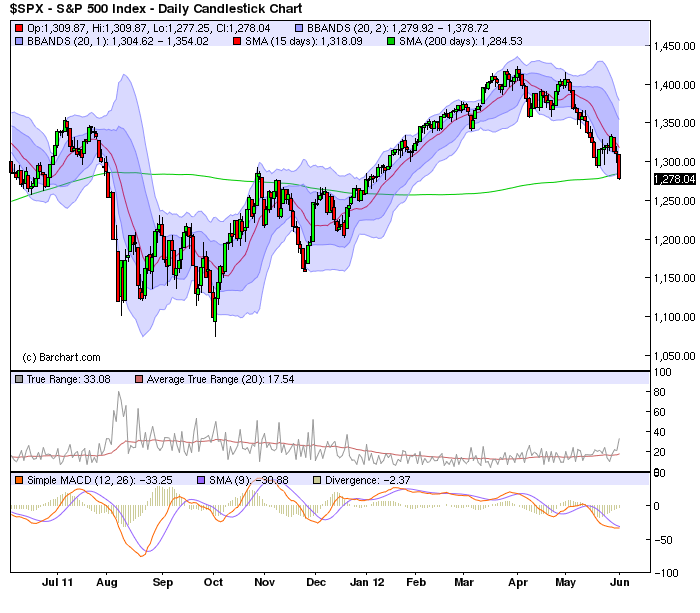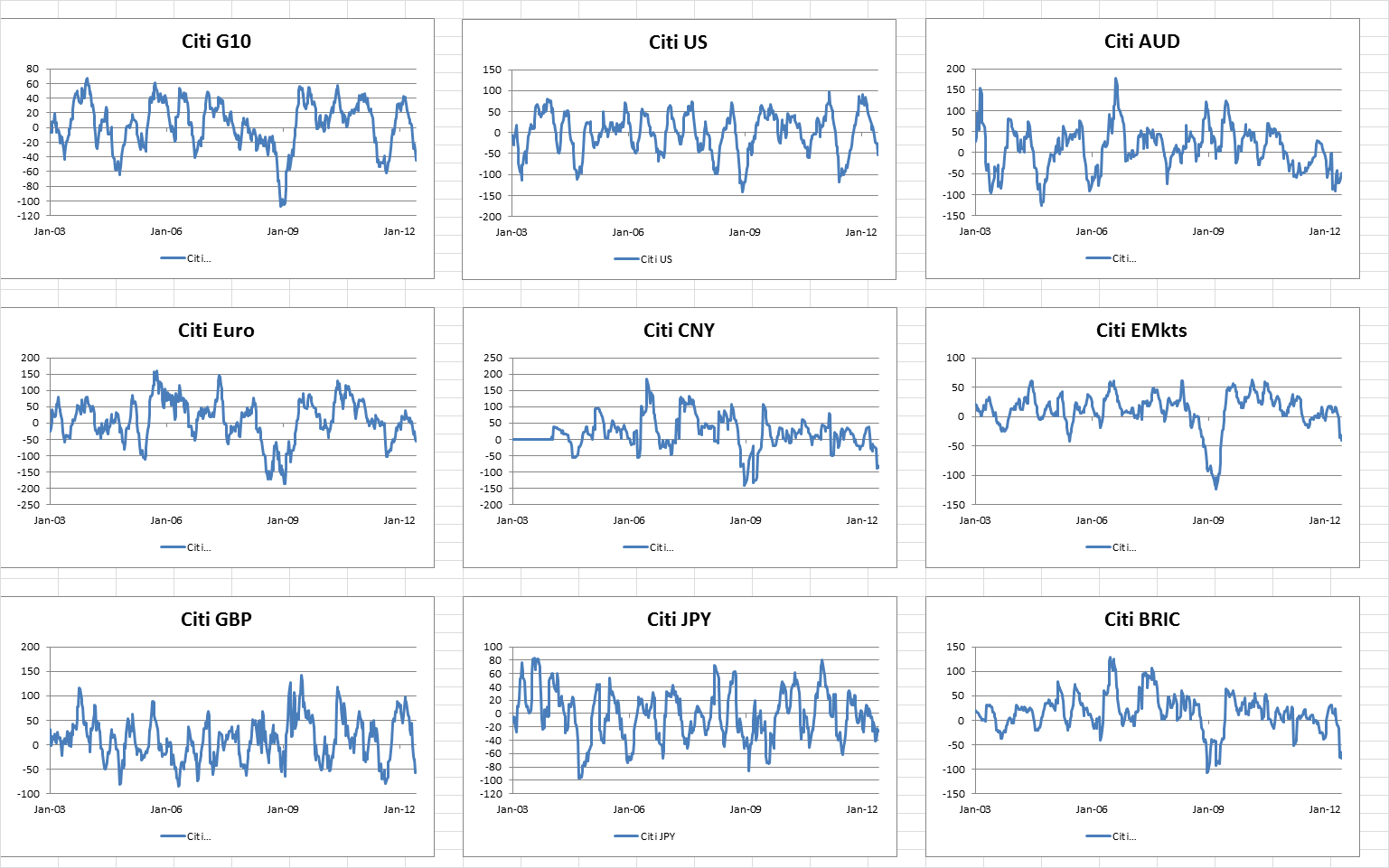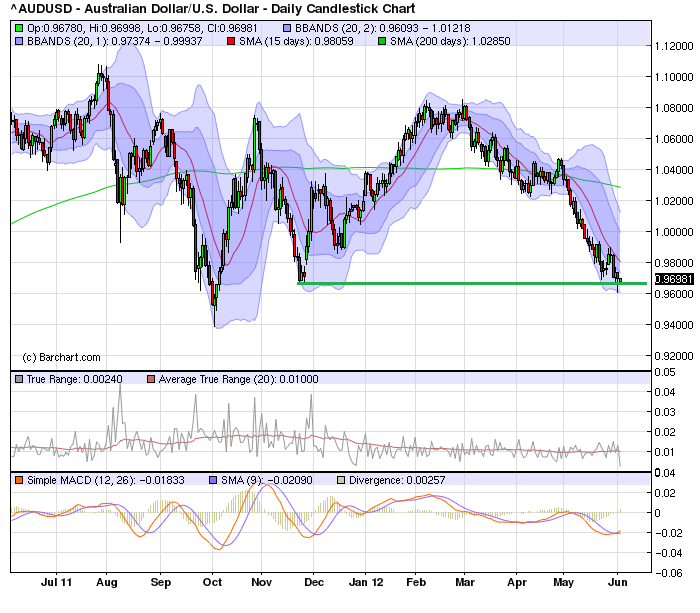
Stocks plunged more than 2 percent in the US on Friday as the release of a terribly low non-farm payrolls result of 69,000 jobs and an uptick in the unemployment rate that suggests that the US recovery is faltering. The Dow has been dragged into negative territory for the year now and the S&P has closed at its lowest level this year and below the 200 day moving average for the first time since December 2011 as you can see in the chart below:

I’ve read a number of stories saying that tonight’s trade will be the first opportunity technical traders have to sell after this close so it could get ugly and read others, as well as had discussions with some, who say this is a great big bear trap and the market will bounce. I have reckoned for a while that the S&P 500 was heading back to 1200 which is probably a stretch just yet but a reasonable Fibonacci projection for this run is 1244 or another 33 points below last week’s close. Two of my systems are short S&P’s at present.
Now, of course, the faltering jobs recovery, and with it the faltering prospects of an Obama re-election, has some clamouring for the next bout of quantitative easing from the Fed. I’m on the record as saying I think we are beyond the point where QE can have a lasting impact on the economy and markets – confidence that QE will work, that policy makers and or politicians have a clue what to do and that the overall global recovery is anything but spluttering is such that I’d trade any QE rally but I’d fade it pretty quick.
Indeed I think David Einhorn of Greeenlight Capital said it best about a month ago:
A Jelly Donut is a yummy mid-afternoon energy boost. Two Jelly Donuts are an indulgent breakfast. Three Jelly Donuts may induce a tummy ache. Six Jelly Donuts — that’s an eating disorder. Twelve Jelly Donuts is fraternity pledge hazing. My point is that you can have too much of a good thing and overdoses are destructive. Chairman Bernanke is presently force-feeding us what seems like the 36th Jelly Donut of easy money and wondering why it isn’t giving us energy or making us feel better. Instead of a robust recovery, the economy continues to be sluggish.
Yep – nicely put. Too much of a good think is a bad thing or, put another way, it’s a definition of madness to keep repeatedly doing the same thing if it doesn’t work. Isn’t it? European politicians and policy makers please take note.
Indeed I’d argue that the data continues to print to the weak side. The below updated chart of the Citi Surprise indices shows that for most markets, except Japan, the last week of data was indeed a continuation of the recent poor responses:

And this is before US NFP. But what does this mean?
It means that market pundits are still yet to recalibrate their expectations of economic releases to the weaker data flow. They will in time, as discussed last week, but they haven’t yet. Which gives two options – one which I think unlikely, the other that I’m betting on. The first one is that the data will start to print on the better side of the ledger. That is entirely possible but my reading of the economic tea leaves is that the global economy has shifted back a gear because of increasing uncertainty over Europe and endogenously. The second, more likely scenario for me is that the punditry slashes their expectations on economic outcomes until data surprises to the upside. I think this will happen, but it means they need to cut back expectations first, which will continue pressure on equities in particular.
Some argue that markets have moved a long way in the past couple of months. You can’t deny that the AAA rated bond rates at generational lows, indeed in the UK the lowest rates since the 1700’s, aren’t a sign of an acute stress and a repositioning of risk. Market positioning in the euro and Australian dollar, at least for the speculative traders, also suggests the risks remain for a short squeeze, but for me the overall macro forex backdrop remains one which is not positive for the Australian dollar.
So where to for the Aussie?
This week we expect the RBA to cut rates at least 25 basis points with an outside chance of another 25. Personally I’d be cutting 50 because I think things have deteriorated since the last cut when they tried to get in front of the curve and they are once again behind. This will have a negative impact on the Aussie. Equally news over the weekend that S&P might have to cut the Australian government’s AAA credit rating should they abandon the drive for surpluses will be of interest to offshore observers as they evaluate their love affair with Australia. I think if the economy needs stimulus the government should give it but the situation remains as strangely doctrinaire in Australia as it is in Europe.
So to the charts:

The Aussie dipped below the support zone from last December in trade Friday night before coming back on the back of USD weakness after non-farm payrolls. It was a bounce from below 0.96 to the current level around 0.97 which is pretty good but for mine a weak US economy is usually not a great thing for the Aussie dollar – but that’s not technicals is it. I guess I remain bearish medium term but for the moment only a close below 0.9660/70 would get me excited about a run toward 0.9430 first target. Any bounce back toward last week’s highs is an opportunity to sell and a break of 0.9805 would cut me out of a trading short at the moment.
Overall markets remain in a funk but I am not convinced all the bad news is priced in.
Have a great day
Gregory McKenna
www.twitter.com/gregorymckenna
Please remember these are not recommendations for you to trade these are my views and I have my risk management tools and risk parameters that you do not have access to. Thus, this blog is for information only and does not constitute advice. Neither Greg McKenna nor Lighthouse Securities has taken your personal circumstances, objectives or financial situation into account. Because of this you should, before acting on this information, consider its appropriateness, having regard to your objectives, financial situation or needs.